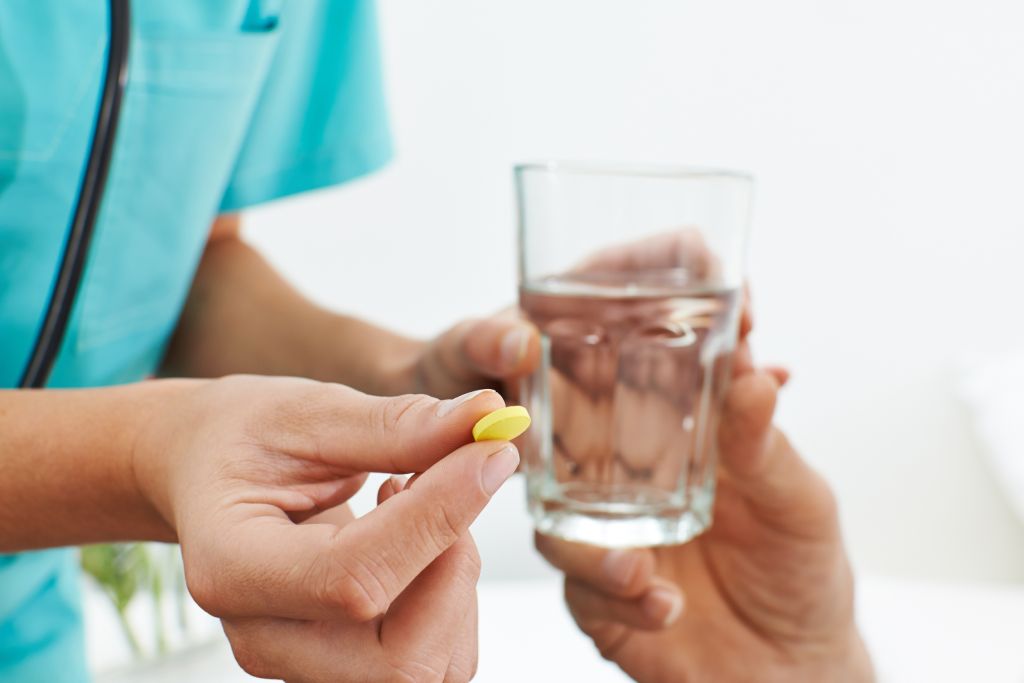Table of Contents
TL;DR:
- Medication-assisted treatment (MAT) combines medication with counseling and behavioral therapy to treat addiction.
- MAT reduces cravings, eases withdrawal symptoms, stabilizes brain chemistry, blocks the effects of addictive substances, and helps people stick with treatment.
- Potential downsides of MAT include side effects, dependence on medication, and stigma.
- MAT is highly effective and can reduce the risk of death from substance abuse.
- Success of MAT depends on individual factors and commitment to treatment.
Addiction is a tough battle that can affect anyone, casting a dark cloud over many lives. Breaking free is no easy feat and often requires a mix of different treatment methods.
One approach that emerged in the 1960s for opioid use disorder (OUD) is Medication-Assisted Treatment (MAT). This method combines medication with counseling and behavioral therapy, offering a valuable lifeline for those struggling with addiction.
In this post, we’ll take a closer look at medications for addiction treatment, exploring their benefits and drawbacks. By understanding the pros and cons, you’ll be better equipped to make the right choices for your own journey to a healthier, happier you.
The Pros of Addiction Medications
So, what makes MAT so valuable? Here are some of the key benefits:
Reduced Cravings and Withdrawal
Medications can significantly reduce cravings and ease withdrawal symptoms, which are often big hurdles in recovery. By taking the edge off these challenges, medications make it easier for people to concentrate on therapy and get their lives back on track.
Stabilized Brain Chemistry
Addiction often disrupts brain chemistry, however, medications can help balance it. By restoring normal brain function, people can think more clearly, manage their emotions better, and make smarter decisions—all essential for staying on the path to recovery.
Blocking the Effects of Addictive Substances
Another notable advantage is that certain medications can block the effects of addictive substances.
They do this by attaching to the same brain receptors that the addictive substance would normally hit. By taking up these spots, the medication stops the substance from giving its usual high.
This helps lower the chance of relapse by cutting off the rewarding effects, even when triggers or setbacks come up.
Improved Treatment Retention and Long-Term Success
Perhaps the most compelling benefit of MAT is how it helps people stick with treatment and achieve long-term recovery.
An NIDA study shows that those who use medication as part of their treatment plan are more likely to remain engaged in treatment and reach lasting sobriety.
The Cons of Addiction Medications
While medication-assisted treatment has plenty of benefits, it’s important to acknowledge that it’s not without its drawbacks. Here are some of the potential downsides:
Side Effects and Adverse Reactions
Like any medication, those used in MAT can have side effects. These can range from mild issues like nausea or dizziness to more serious complications depending on the person and the medication.
It’s important to talk openly with your healthcare provider about any possible side effects and how to handle them.
Dependence and Transitioning Off Medication
Another concern is the possibility of becoming dependent on the medication itself. While this risk is often lower than the risk of relapse to the original substance of abuse, it’s still something to consider.
Transitioning off medication can be challenging and requires careful planning and support from your healthcare team.
Stigma
Unfortunately, there’s still a stigma around using medication for addiction treatment. Some people see it as just swapping one drug for another, missing the real benefits of MAT. This stigma can add extra hurdles for those seeking help and make it harder to talk openly about their recovery journey.
Specific Medications Used in Addiction Treatment
Now that we’ve explored the general pros and cons of MAT, let’s take a closer look at some of the specific medications used to treat different types of addiction.
Remember, it’s crucial to consult with a healthcare professional to determine the most appropriate medication and treatment plan for your individual needs.
Opioid Addiction
When treating opioid addiction, the most common medications are:
- Methadone: This medication reduces cravings, prevents withdrawal symptoms, and blocks the effects of opioids. It keeps a stable medication level in the body, lowering the risk of relapse.
- Buprenorphine: Similar to methadone, buprenorphine reduces cravings, prevents withdrawal, and blocks the effects of opioids. It also helps maintain a steady medication level to prevent relapse.
- Naltrexone: This medication blocks the effects of opioids, making them less rewarding. It’s often used after detox to help maintain sobriety.
These drugs to treat drug addiction work by interacting with the brain’s opioid receptors, helping to manage cravings and withdrawal symptoms, and supporting long-term recovery.
Alcohol Addiction
For those dealing with alcohol addiction, the following medications can help:
- Naltrexone: This medication reduces cravings for alcohol, making it easier to resist the urge to drink
- Acamprosate: It helps restore balance to brain chemicals affected by alcohol dependence, reducing withdrawal symptoms and cravings.
- Disulfiram: This medication discourages drinking by causing unpleasant side effects if alcohol is consumed.
It’s important to remember that these are just a few examples of medications used in addiction treatment. There are other options available, and new medications are constantly being developed.
A healthcare professional can help you explore the different choices and figure out the best approach for your situation.
The Success Rate of MAT
Medication-assisted treatment isn’t just another treatment option; it’s proven to be highly effective with a positive success rate. Studies show it can reduce the risk of death from substance abuse by more than 50%. That’s a powerful statistic that speaks volumes about the potential of MAT to save lives and change futures.
However, it’s important to remember that success can vary based on individual factors, the type of addiction, and how committed someone is to their treatment plan.
The success of MAT can be influenced by factors like:
- The person’s motivation and willingness to stick with treatment.
- How severe and long-lasting the addiction is.
- Any co-occurring mental health issues.
- Access to comprehensive support, including counseling and behavioral therapies.
When MAT is combined with other therapies, it creates a powerful combination that tackles both the physical and psychological sides of addiction. This well-rounded approach helps people build healthy coping skills, rebuild their lives, and achieve lasting recovery.
Take the First Step Towards Recovery Today
If you or someone you know is struggling with addiction, don’t wait to get help. At Infinite Recovery, we offer a variety of evidence-based treatment options, including medication-assisted treatment, to support your recovery journey. Our caring and experienced team is here to guide you every step of the way.
Reach out to us today to learn how we can help you break free from addiction and take back control of your life.

















